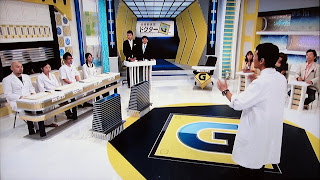
外国資本が日本の森林を買っていくと「クローズアップ現代」が報じた現実は、我々のような一般的日本人にもちょっとした衝撃だった。
北海道の具体例では、イギリス、豪州、中国、ニュージーランド、シンガポールの資本が既に入っていることが自治体の調査で明らかになった。木材需要が急騰する中国の資本がインドネシアやロシアで違法な森林伐採を大規模に行った事例もあって、我々は咄嗟に外人による乱開発を想像して浮き足立つのだが、市場開放そのものが悪とは言えない面もあり、この問題は突き詰めると外国資本に限らず、社会資産としての森林資源の所有と維持に対する法整備の遅れということに尽きるだろう。
森は育てるもので、それには人手もかかる。しかし林業は低価格の外材に席巻されて以来、衰退産業化して久しく、後継者も育たず、現実に間伐さえままならない末期的状況にある多くの森が悲鳴を上げている。そんな時に国内の常識的価格の5倍もの現金を見せられたら、将来展望の見えない森林所有者が山を手放す気になるのは容易に理解できる。そんな袋小路の日本を外から見ると伐採期を迎え、豊かな水資源に支えられた日本の森林は価値が高いというのは皮肉な話だ。
甘いかも知れないが、僕は個人レベルの共同出資を全国レベルで組織して小さな森林からでも具体的に若者を林業に誘導して従事させるような組合というか団体を広めていくことは可能だと思う。森はラスベガスやマカオではない。
北海道の森林を買った中国富豪の場合は仲介業者のイギリス人によると長期投資目的のようで、アメリカでも今やエコブームもあって森林ファンドの将来性に関心は高いという。水と木を育む国土の源である森をひと頃の石油やトウモロコシのようなマネーゲームの対象にしてはならないのだ。

NHK broadcast the program “Close-up Gendai” yesterday reporting that foreign capitals were buying forests in Japan, which was a small shock to us typical Japanese.
In practice, Hokkaido Prefecture looked into the situation to find that some forests were already owned by British, Australian, Chinese, NZL and Singaporean capitals. Because the demand for woods in China is increasing enormously, they did some large-scale deforestation illegally in Indonesia and Russia, and the same kind of excessive development of forests by foreigners becomes a concern for us to react with uneasiness. Openness of the market is not necessarily a bad thing, and this particular issue may not be only related to foreign capitals, but it ultimately boils down to the unprepared legal arrangement and regulation with regard to the possession and the maintenance of forests being attributed highly as the fundamental social resource.
The forest grows through human hands and it requires the manpower. Nevertheless, the forestry business significantly recessed since the introduction of low-cost foreign woods, and the successors are disappearing that has caused some catastrophic situation not being able to execute such works as the proper culling. The forests are crying. If the forest owners are offered the money that is 5 times more than typical domestic value when they have lost the hope for the future, it is easy to expect that they would give up their land. Ironically, this cul-de-sac, if observed from the outside, appears as a property with high value because the woods are about the time to cut and the climate is rich with water.
I could be superficial, but I think it is quite possible to gather individual investors of small amount nationwide organizing a group to start with some small forests in practice inviting the young generation to the forestry to maintain and grow from there. It is simply a better alternative to mere selling and buying of forests by rich investors.
According to the English broker, his Chinese client bought the forest in Hokkaido as a long-term investment, and today the forest funds are attracting more attention in US along with the “green” boom. On the other hand, the forest is the fundamental factor of our country’s land preserving the woods and the water, and we must not treat it as a money-game objective like the oil or the corn as we have seen a while ago.















